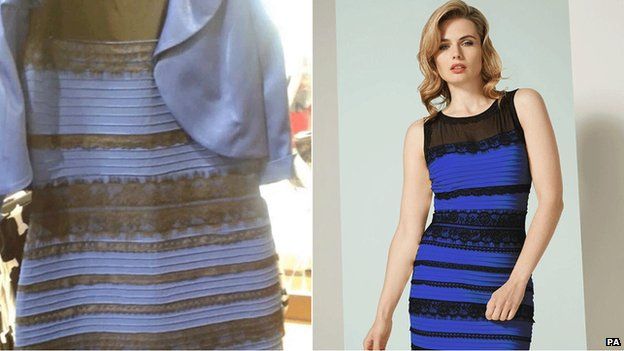The Blue Black Dress illusion took the internet by storm in 2015, captivating millions of people across the globe. It all started when a photograph of a dress was posted online, and people couldn’t agree on its true colors. Some saw the dress as blue and black, while others insisted it was white and gold. This simple image sparked heated debates, divided friendships, and even caused some couples to question their compatibility. The dress became a viral sensation, with everyone from celebrities to politicians chiming in with their opinions.
The phenomenon of the blue and black dress highlighted the subjectivity of perception. It demonstrated how two people can look at the same image and interpret it differently based on their experiences and how their brains process visual information. Scientists and psychologists were fascinated by this optical illusion and used it as a case study to better understand how our brains perceive colors.
The viral nature of the blue and black dress can be attributed to its ability to tap into our innate curiosity and desire to solve mysteries. It captured our attention and sparked conversations because it challenged our understanding of reality and reminded us that our perceptions can sometimes be deceiving. The dress became a symbol of the power of social media to bring people together and the unpredictability of internet fame.
Who is the Man Behind the blue black dress illusion?
The man behind the viral blue and black dress illusion is Paul Fenwick, a software developer from Australia. Paul had no idea the dress he posted on social media would become an international sensation. He initially took the photograph of the dress at a friend’s wedding and shared it online to get some opinions on the color.

Also Read – NYC Dublin Portal Flash Video OnlyFans Model Ava Louise
Paul became the unwitting center of attention as the debate over the dress escalated. He was bombarded with messages and interview requests from media outlets worldwide. Despite the sudden fame, Paul remained humble and down-to-earth, often joking about his unexpected role in internet history.

In the years following the dress controversy, Paul has continued to work as a software developer and has embraced his unique claim to fame. He has given talks about the power of viral content and the impact of social media on our lives. Paul serves as a reminder that sometimes the most unexpected things can bring us into the spotlight, and how we handle that attention truly defines us.
The Explanation of the viral blue black Dress Illusion
The blue black dress illusion can be explained by how our brains interpret colors under different lighting conditions. The dress is blue and black, but the perception of its colors can change depending on the lighting in which it is viewed.
When the dress is viewed under bright, natural light, our brains interpret the colors as blue and black. However, in dimmer lighting or under artificial lighting, our brains can be tricked into perceiving the dress as white and gold. This is due to the way our brains adjust to different lighting conditions and make assumptions about the colors we see.
The lighting conditions in which an image is viewed can significantly affect our perception of its colors. The blue and black dress illusion highlights the subjective nature of color perception and reminds us that our brains can sometimes play tricks on us.